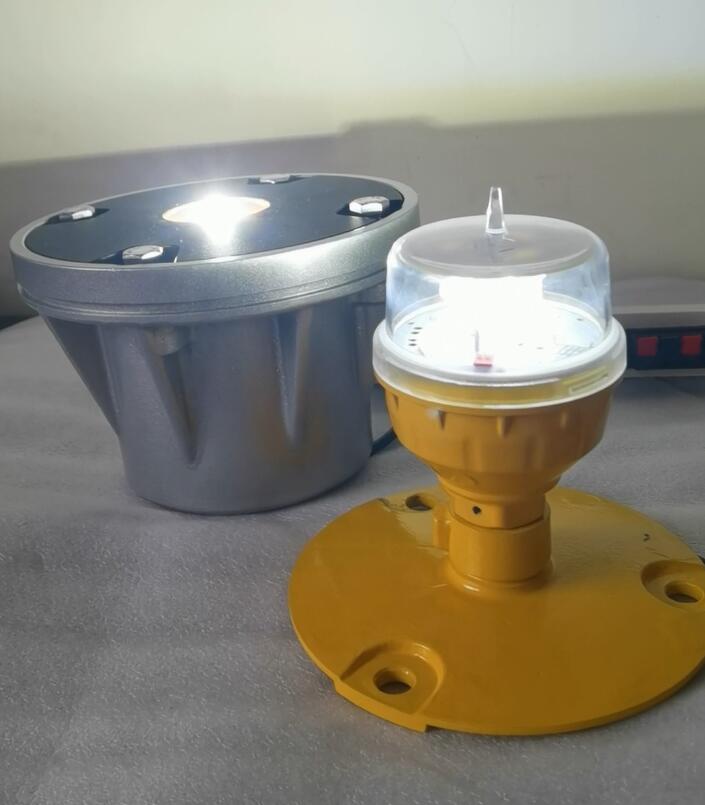In the world of aviation, heliports play a crucial role in facilitating swift and efficient transportation. Whether it's for emergency medical services, corporate travel, or military operations, heliports need to be equipped with a reliable and effective lighting system. The heliport lighting system is not just a set of lights; it is a complex network of technologies that ensure the safety and functionality of these vital landing areas.
Heliports are often located in diverse environments, ranging from urban rooftops to remote areas. This poses unique challenges for lighting design. The heliport lighting system must be able to withstand various weather conditions, including strong winds, rain, snow, and fog. It also needs to be visible from a distance to guide pilots towards the landing area, even in low visibility conditions.
The core components of a heliport lighting system include perimeter lights, approach lights, and taxiway lights. Perimeter lights mark the boundaries of the heliport, providing a clear visual indication of the landing area. These lights are typically bright and highly visible, with different colors and intensities to distinguish them from other lights in the surrounding area. Approach lights are designed to guide pilots during the final approach to the heliport. They create a visual path that helps pilots align their helicopters correctly and land safely. Taxiway lights, on the other hand, are used to guide helicopters once they have landed and are moving towards the parking or hangar area.

One of the key features of a modern heliport lighting system is its ability to be remotely controlled and monitored. This allows operators to adjust the lighting intensity and patterns based on weather conditions, time of day, and other factors. For example, during low visibility conditions, the lights can be made brighter to enhance visibility. Additionally, remote monitoring enables operators to quickly detect and address any issues with the lighting system, ensuring its continuous operation.
Another important aspect of heliport lighting is energy efficiency. With the increasing focus on sustainable aviation, heliport operators are looking for lighting systems that consume less energy while still providing excellent visibility. LED lights are becoming increasingly popular for heliport lighting due to their low energy consumption, long lifespan, and high brightness. These lights can be programmed to adjust their intensity automatically based on ambient light levels, further reducing energy consumption.
Safety is the top priority in heliport operations, and the lighting system plays a crucial role in ensuring this. The heliport lighting system must be designed to minimize glare and reflection, which can distract pilots and affect their visibility. Additionally, the lights should be placed in such a way that they do not create blind spots or interfere with the pilot's view of the landing area. Regular maintenance and inspection of the lighting system are also essential to ensure its reliability and safety.
| Heliport Lighting System | 45E |
| 23E | 12F |
In addition to providing visual guidance for pilots, the heliport lighting system also serves as a communication tool. Different colors and patterns of lights can be used to convey important information, such as the status of the heliport (open/closed), the direction of taxiways, and any potential hazards. This helps pilots make informed decisions and navigate the heliport safely.
As technology continues to advance, we can expect to see even more innovative features in heliport lighting systems. For example, some systems are being developed that use sensors and intelligent algorithms to automatically adjust the lighting based on the movement of helicopters. This can improve energy efficiency and enhance safety by providing targeted lighting only when and where it is needed.
In conclusion, the heliport lighting system is a critical component of heliport operations. It provides the necessary visibility and guidance for pilots, ensuring safe and efficient landings and takeoffs. With the increasing demand for helicopter transportation and the focus on sustainable aviation, the development of advanced heliport lighting systems will continue to be an important area of research and innovation. Whether it's through the use of LED technology, remote control and monitoring, or intelligent algorithms, the heliport lighting system will continue to evolve to meet the changing needs of the aviation industry.